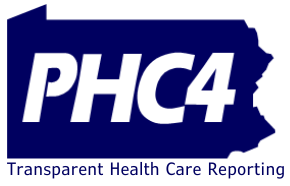The Pennsylvania Health Care Cost Containment Council (PHC4), a pioneer in health care report cards, was established with the idea that providing credible information would increase competition among hospitals and thereby improve the quality of care. One PHC4 annual report summarized it this way:
Public Information + Competition = High Quality, Cost Effective Health Care
Lehigh University (Lehigh) economics professor Shin-Yi Chou, Ph.D., hypothesized that access to information on the quality of health care gives providers an incentive to improve care, and that the incentive should be stronger in markets with higher competition, where consumers have more choices.
To examine the hypothesis, Lehigh purchased PHC4 inpatient discharge data for a study of how the online publication of PHC4’s hospital report cards affected health outcomes in Pennsylvania hospital markets with different degrees of competition. Specifically, the study focused on the outcomes of Pennsylvania residents covered by Medicare who underwent Coronary Artery Heart Bypass Graft (CABG) surgery in Pennsylvania hospitals from 1995 through 2004.
“We expected higher quality in those markets where hospitals faced more competition and where consumers were well-informed about quality,” said Dr. Chou, a Frank L. Magee distinguished professor of economics at Lehigh and a research associate at the National Bureau of Economics Research.
The study was limited to Medicare fee-for-service patients because they have the ability to choose a hospital, and because reimbursement is fixed. The relationship between quality and competition can be unclear when firms may alter price and quality, according to economic theory.
During the study period, 18 additional CABG providers entered the market, while the number of CABG surgeries fell by about 30%, possibly due to improved access to preventive care and development of alternative procedures such as stenting. Over time and between markets, competition increased, particularly in more densely populated areas.
The Journal of Health Economics1 recently published the study, which is titled “Competition and the Impact of Online Hospital Report Cards.” The study concluded that after PHC4’s CABG public report cards went online in 1998, hospitals in more competitive markets used more resources per patient and achieved lower mortality rates among more severely ill patients. In more competitive markets, there was a 5-10% reduction in mortality at an additional cost of $2,000 per case. The extra expenditures made by more competitive hospitals had the most value for more severely ill patients.
“The more competitive hospitals achieved quality improvements for a reasonably small extra cost. The competition encouraged by report cards seems to be more desirable, from a taxpayer point of view, than competition based on amenities,” Dr. Chou concluded.
Dr. Chou said economists like to identify causal relationships, which requires teasing out other confounding factors. Economists must control for variation across markets. The unique feature of PHC4 data is that it provides economists with the ability to link patients longitudinally using pseudo-identifications, allowing for the identification of patient co-morbidities, like hypertension, and the control for individual patient characteristics and the severity of patients’ illnesses.
The study found no evidence of hospitals selecting healthier patients for CABG surgery in favor of more severely ill patients in order to improve their scores in report cards. Researchers looked for any changes in treatment patterns for Medicare patients with coronary artery disease that might be treated surgically either by CABG or balloon angioplasty. In fact, after CABG report cards went online, the number of CABG procedures increased in the most competitive markets among more severely ill patients. The severity of patients’ illnesses did not change significantly when comparing more competitive to the least competitive markets.
Dr. Chou has used PHC4 data for other studies. One study examined the impact of CABG report cards on a provider’s aggregate volume and volume by patient severity.2 It found a reduction in volume of poor-performing and unrated surgeons’ volume, and a lower probability that patients, regardless of severity of illness, receive CABG surgery from low-performing surgeons. Dr. Chou and her students are also working on a project that will examine the impact of price transparency on patient choice.
1 Shin-Yi Chou, Mary E. Deily, Suhui Li and Yi Lu, “Competition and the Impact of Online Hospital Report Cards,” Journal of Health Economics, 34(2): 42-58, 2014.
2 Justin Wang, Jason Hockenberry, Shin-Yi Chou and Muzhe Yang, “Do Bad Report Cards have Consequences? Impacts of Publicly Reported Provider Quality Information on the CABG Market in Pennsylvania,” Journal of Health Economics, 30(2): 392-407, 2011.
Return to the Case Studies page: VIEW ALL CASE STUDIES


